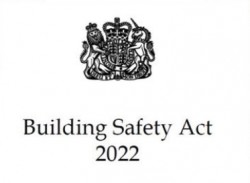Coming in the wake of the Hackitt review, and receiving royal assent in April 2022, the building safety act covers a raft of changes for housebuilders and developers. These include a new system of accountability for safety in projects, a construction products regulator, and a refreshed regulatory framework. It is claimed to be the biggest change in building safety for over 40 years.
The 262-page document aims to reduce safety risks related to fire spread and structural failure through greater planning scrutiny, increased regulation of professional competence and the creation of new statutory roles during the design and construction of 'higherrisk' buildings.
The overhaul of regulations will require building owners to demonstrate safety at each of three new 'gateways' for planning and design, construction and occupation. Compliance will be monitored by the newly established Building Safety Regulator, with significant powers to demand documents and stop works, and a new National Regulator for Construction Products, with power to remove dangerous products from the market.
One of the most significant features is the expansion of the principal designer role to include oversight of safety in higher-risk buildings. As well as construction site safety duties, principal designers will now be expected to plan, manage and monitor design work to ensure compliance with building regulations and maintain a 'golden thread' of data on design decisions for fire and structural safety.
In her report 'Building a Safer Future', Dame Judith Hackitt recommends: "More effective testing regimes with clearer labelling and product traceability, in order to drive continuous improvement, higher performance and encourage innovative product and system design under better quality control." Provisions have filtered down from the independent Hackitt review with most of the recommendations being adopted by the government.
LSF Safety Benefits
Light steel frame is non-combustible and does not add to the fire load of the building. Fire protection is typically provided by A1 non-combustible boards used for internal linings and resistance periods of up to 120 minutes are readily achievable.
The amount of combustible material in a light steel framed building is much lower than in some other building materials such as timber. The fire risk during construction is therefore much lower for light steel buildings.
The industry is evolving from 'sticks of steel' to panelised systems which offer high levels of pre-manufactured value with factory fitted non-combustible boarding and insulation. Some manufacturers have taken this a step further to include doors, windows, and even external cladding.
These systems are often promoted for their ability to fast-track construction projects but many manufacturing members of the Light Steel Frame Association (LSFA) have invested in robust testing regimes to provide evidence of fire resistance, acoustic performance, weathering, airtightness, durability and mechanical performance.
Steel offers consistently high-quality standards, precision engineered products together with guaranteed strength and durability in the most challenging of environments. For those looking for quality assurance, steel framing systems deliver complete certainty. Rigorous quality assurance processes give full traceability at all stages in the supply chain, from steelmaking through to fabrication and installation on site. Steel used by LSFA members is CE Marked, providing assurance that the material is compliant with the Construction Products Regulation.
To discover more about the benefits, go to: www.lsf-association.co.uk
Read the full article, go to Light Steel Frame Association








